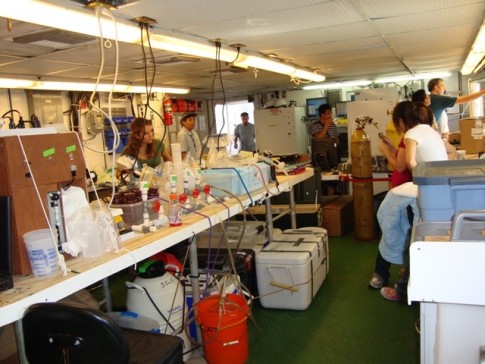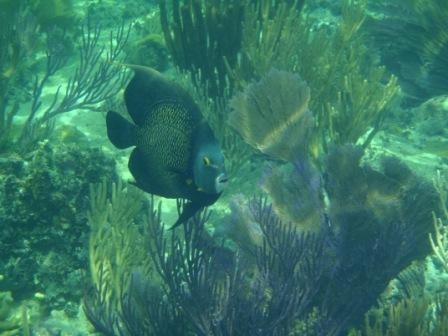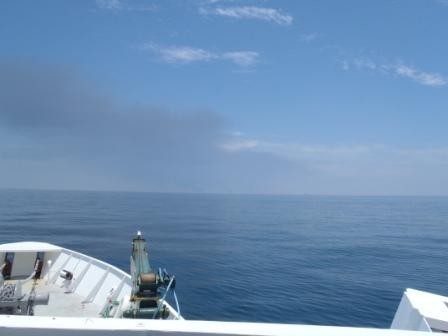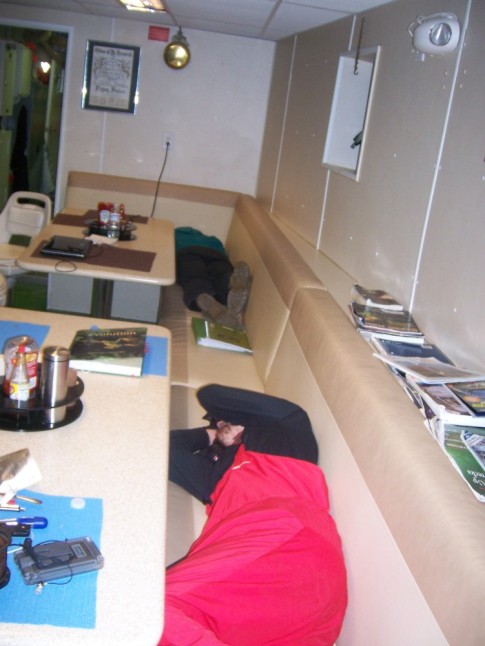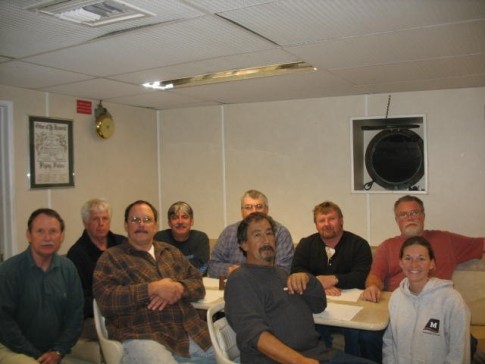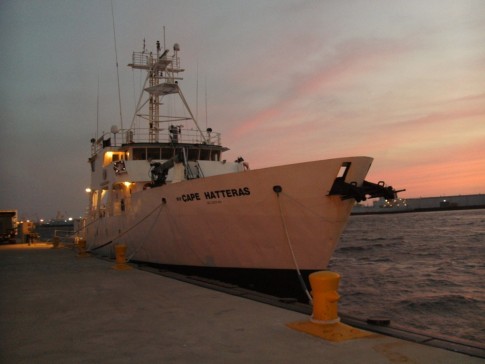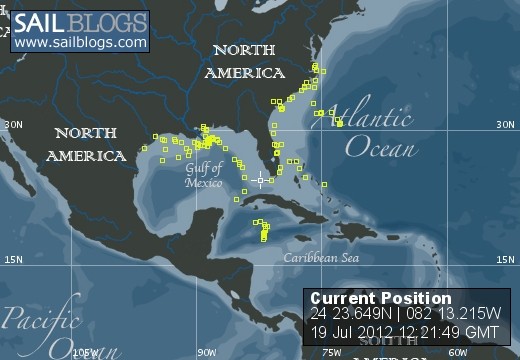
Research Vessel Cape Hatteras
The R/V CAPE HATTERAS is owned by the National Science Foundation and operated under a renewable Charter Party Agreement by the Duke/UNC Oceanographic Consortium. Her homeport is at Duke University Marine Laboratory in Beaufort, North Carolina.
11 March 2013
01 February 2013 | Beaufort, NC
14 January 2013
14 January 2013
19 July 2012 | Straits of Florida
19 July 2012
04 July 2012
15 November 2011 | East Flower Garden Banks, Gulf of Mexico
06 November 2011 | East Flower Garden Back, Gulf of Mexico
05 November 2011 | Gulf of Mexico
27 August 2011 | North Charleston, SC
26 August 2011 | North Charleston, SC
25 August 2011 | off SC coast
23 August 2011 | off the coast of NC
23 August 2011 | Off the coast of NC
06 August 2011 | Gulf of Mexico
05 August 2011 | GUlf of Mexico
30 June 2011 | Gulf of Mexico
30 June 2011 | Charleston, SC
25 May 2011 | Mission Annelid: Success
More Glider informaton
07 August 2010 | Near the Dye
Steve
OSU Gliders on Cape Hatteras
As part of the Lateral Mixing Project aboard the R/V Cape Hatteras, Oregon State has brought two Gliders to help collect data in coordinated multi-instrument operation. Scientists are running a seven day test mission to observe and record the complex ocean mixing occurring between different shallow water masses (approx 10-30m deep). The team released special florescent dye and gps-tracking drifters to follow the currents. They then launched a glider that will run survey lines that move with the drifters. The data that these instruments collect will help scientists understand mixing in the ocean and will ultimately help us know more about how energy is dissipated throughout the planet! The full project will go live next summer will include three ships, four gliders and an airplane-mounted LIDAR (Light Detection And Ranging) sensor.
About Gliders:
A glider is a type of Autonomous Underwater Vehicle (AUV) that moves through the sea by changing its buoyancy. The glider shifts a weight forward and brings in a little water as ballast which points its nose down and makes it slightly heavier than water. The glider slowly descends while flying forward. At a pre-determined depth, the glider reverses its weight and buoyancy settings to rise and continue flying forward. All the while, the glider collects data about water properties (like temperature, salinity and pressure). Pilots onboad the ship (or on land) communicate with the Gliders every few hours to give them new directions, review their data and see how their software, sensors and motors are doing.
If you would like to learn more about gliders check out: http://gliderfs2.coas.oregonstate.edu/gliderweb/
And you can follow OSU glider missions at: http://blogs.oregonstate.edu/gliders/
As part of the Lateral Mixing Project aboard the R/V Cape Hatteras, Oregon State has brought two Gliders to help collect data in coordinated multi-instrument operation. Scientists are running a seven day test mission to observe and record the complex ocean mixing occurring between different shallow water masses (approx 10-30m deep). The team released special florescent dye and gps-tracking drifters to follow the currents. They then launched a glider that will run survey lines that move with the drifters. The data that these instruments collect will help scientists understand mixing in the ocean and will ultimately help us know more about how energy is dissipated throughout the planet! The full project will go live next summer will include three ships, four gliders and an airplane-mounted LIDAR (Light Detection And Ranging) sensor.
About Gliders:
A glider is a type of Autonomous Underwater Vehicle (AUV) that moves through the sea by changing its buoyancy. The glider shifts a weight forward and brings in a little water as ballast which points its nose down and makes it slightly heavier than water. The glider slowly descends while flying forward. At a pre-determined depth, the glider reverses its weight and buoyancy settings to rise and continue flying forward. All the while, the glider collects data about water properties (like temperature, salinity and pressure). Pilots onboad the ship (or on land) communicate with the Gliders every few hours to give them new directions, review their data and see how their software, sensors and motors are doing.
If you would like to learn more about gliders check out: http://gliderfs2.coas.oregonstate.edu/gliderweb/
And you can follow OSU glider missions at: http://blogs.oregonstate.edu/gliders/
Comments
| Vessel Name: | R/V Cape Hatteras |
| Hailing Port: | Beaufort, NC |
| Extra: | |
| Home Page: | www.rvcapehatteras.org |

Port: Beaufort, NC
